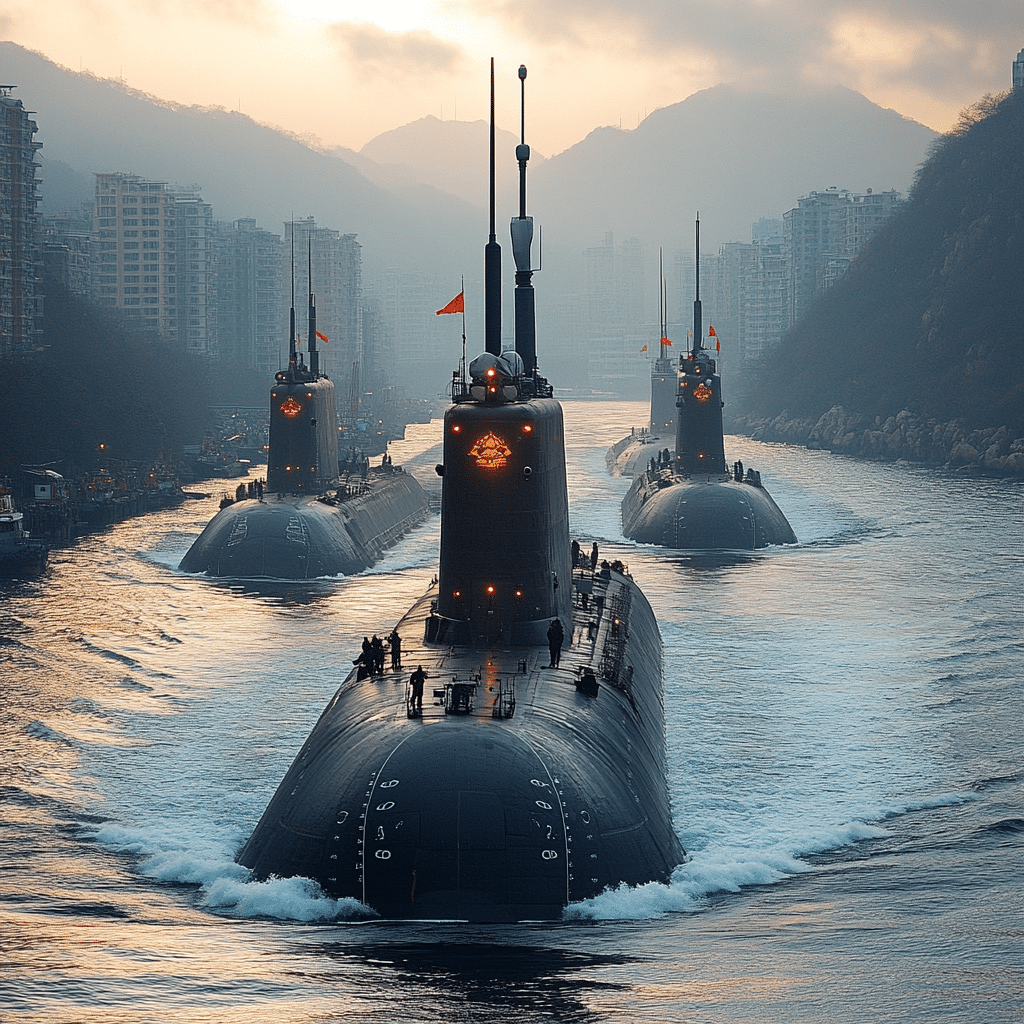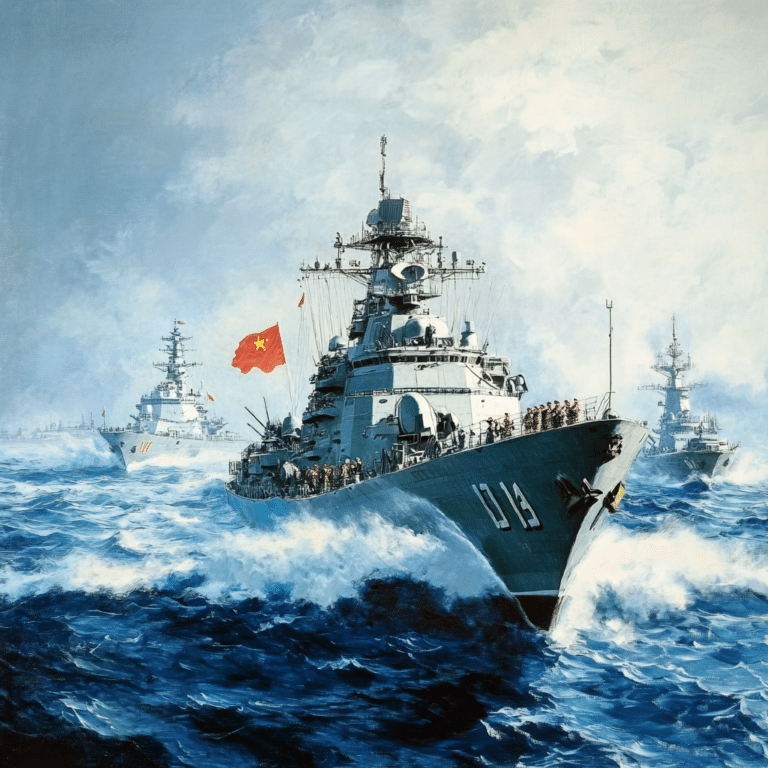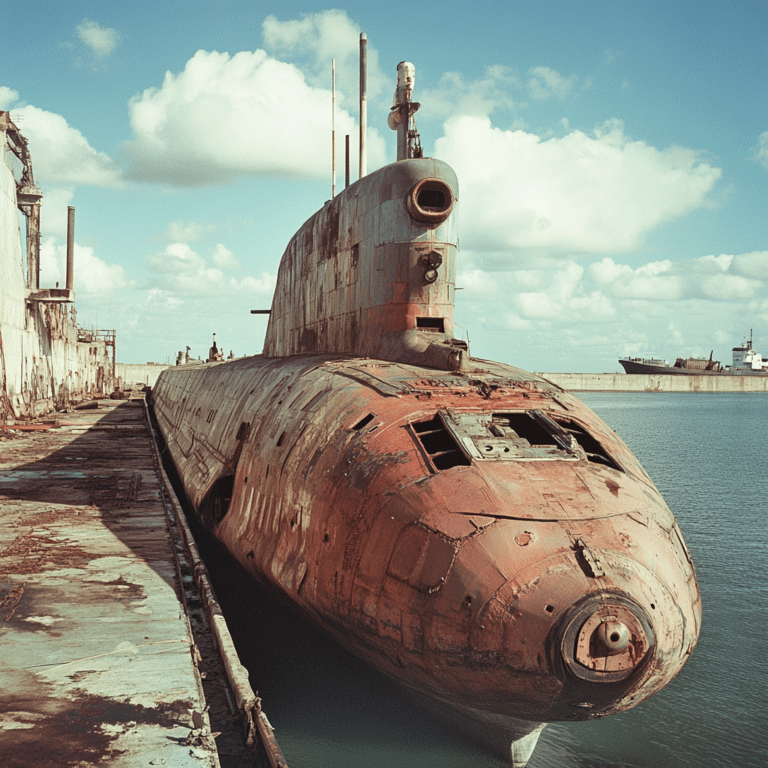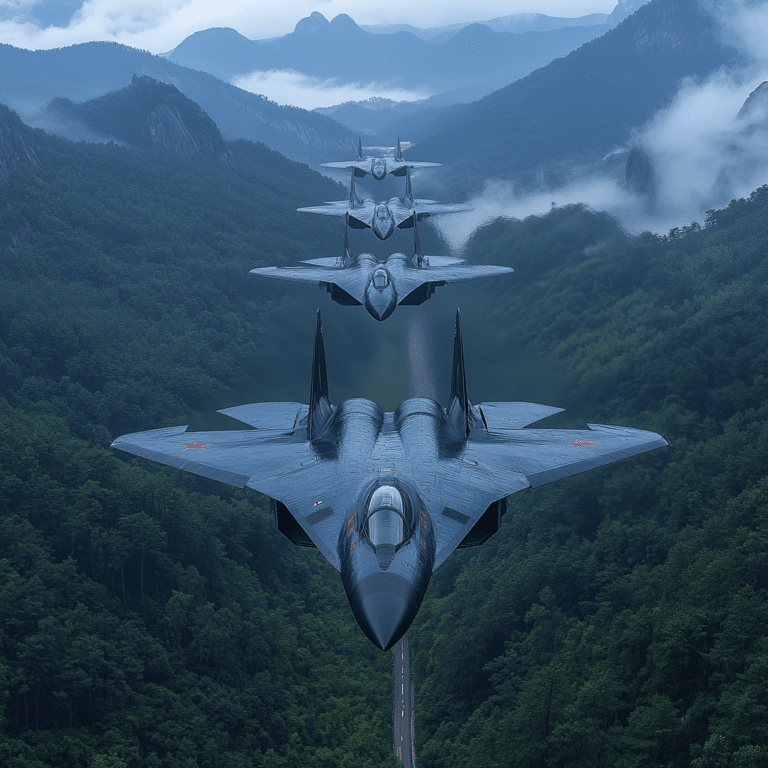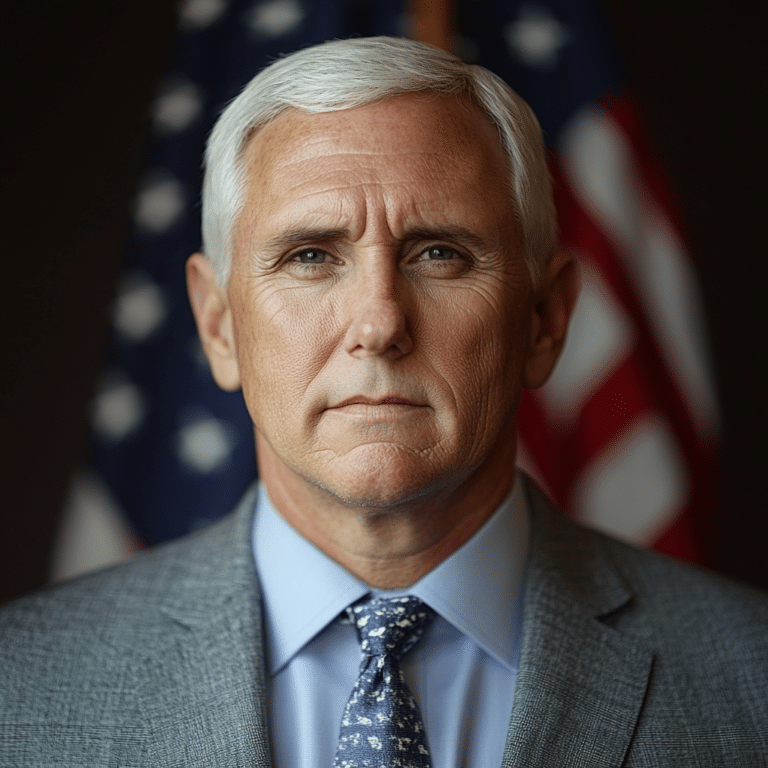Chinese nuclear submarines have emerged as a significant force reshaping the balance of global power. This surge in naval prowess isn’t just a demonstration of military might; it’s a clear signal that China aims to assert its dominance, particularly in the strategically critical Indo-Pacific region. With cutting-edge submarines like the Jin-Class and the anticipated Type 095 and Type 096 models, China’s naval ambitions are manifesting in sophisticated technologies and aggressive maritime posture. It’s a game-changing scenario and one that all conservatives should be paying close attention to.
The Emergence of Chinese Nuclear Submarines in the Geopolitical Landscape
Since their inception, Chinese nuclear submarines have been pivotal in signalling a shift in military capability and strategy. Initially lagging behind Western naval powers, China’s acquisition of cutting-edge technology has enabled their People’s Liberation Army Navy (PLAN) to catch up and, in many respects, surpass expectations. The Jin-Class submarines, the pride of the Chinese fleet, are examples of innovation and aggressive posturing. With a backdrop of rising tensions in the South China Sea and increasing assertiveness towards Taiwan, these developments pose a serious challenge to U.S. interests and its allies.
As of late 2024, reports indicate that the PLAN has stationed at least six Jin-Class submarines at their base under the Southern Theatre Navy. This expansion reflects a military strategy that integrates land, sea, and air capabilities, enhancing China’s ability to project power. With the planned Type 095 and Type 096 submarines, Beijing aims not only to bolster its underwater strike capabilities but also support emerging warfare modalities, including the complicated nature of undersea battles, which often go unnoticed by the public eye.
It’s crucial to remember that the presence of these Chinese nuclear submarines is now reshaping alliances and military considerations across the globe. With China’s strategic imperative to dominate the Indo-Pacific, it becomes increasingly pertinent for the United States and its allies to reassess their defense strategies.
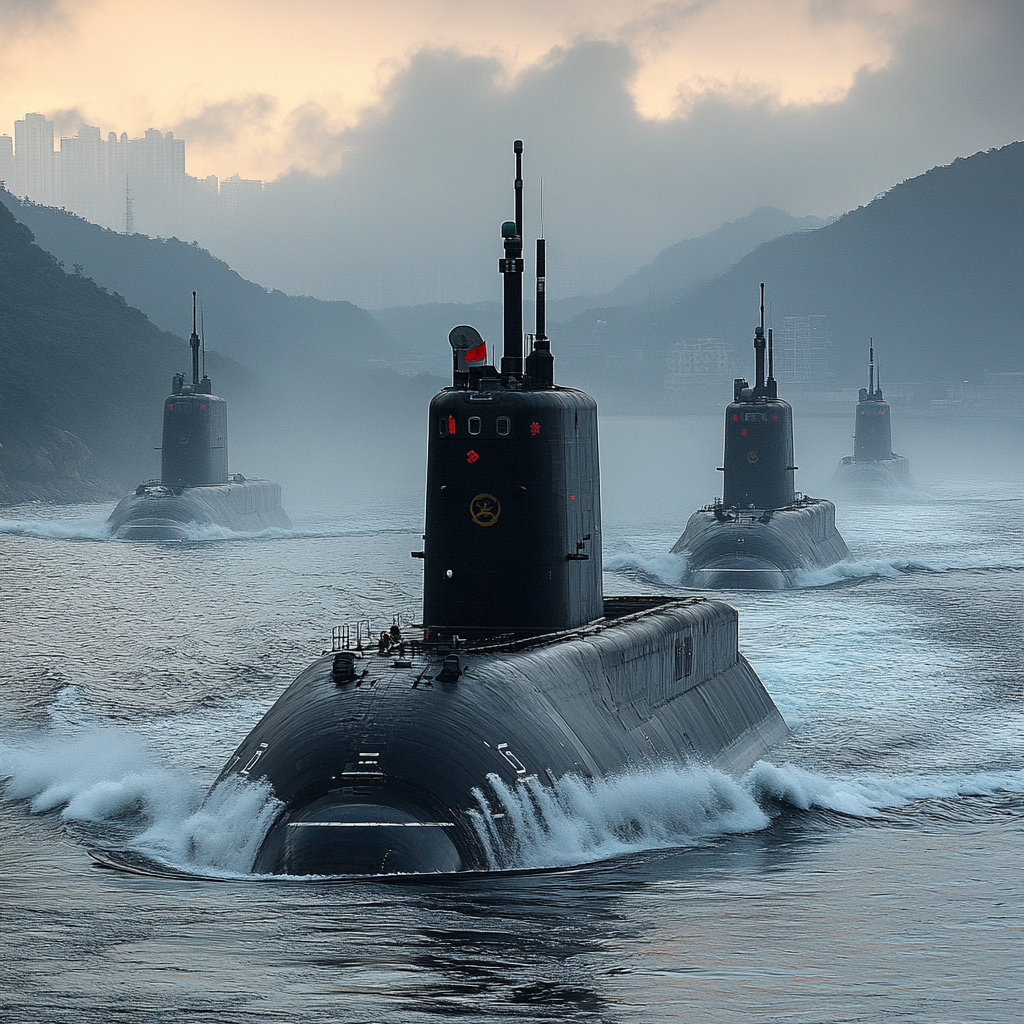
Top 5 Ways Chinese Nuclear Submarines Influence Global Security Dynamics
1. Escalation of Regional Tensions in the Indo-Pacific
The advent of Chinese nuclear submarines has heightened military tensions among neighboring countries. Nations like Japan, South Korea, and India are recalibrating their defense strategies to counterbalance the growing Chinese naval presence. Increased military exercises and partnerships signal that these nations are unwilling to accept China’s expansionist ambitions passively.
2. Influence on North Korea’s Nuclear Aspirations
As China furthers its capabilities in undersea warfare, North Korea keeps a close eye on its partnership with Beijing. The notion of nuclear deterrence is increasingly vital to Pyongyang’s strategy, complicating diplomatic efforts related to Iran nuclear weapons and denuclearization. North Korea’s alliance with China reinforces its nuclear ambitions, as it perceives these advanced submarines as a symbol of strength against perceived external threats.
3. Strengthening Alliances: The Response of Quad Nations
In a display of solidarity, the Quad nations—United States, India, Japan, and Australia—are investing heavily in nuclear submarine capabilities of their own. As Chinese nuclear submarines advance their maritime reach, these nations are uniting to bolster security cooperation. From joint exercises to developing their advanced submarine fleets, the Quad’s response reflects a strategic commitment to counter all potential threats arising from China’s undersea ambitions.
4. The Taiwan Strait: A Nuclear Flashpoint
With Chinese submarines patrolling the Taiwan Strait, the specter of military confrontation looms. The presence of these assets introduces a layer of peril that complicates the equation for the United States and its allies. Analysts are sounding the alarm, suggesting that the deployment of these submarines could be a game-changer for military strategy in a crisis over Taiwan.
5. Economic Implications of Submarine Warfare
The stakes are high beyond mere military tensions. Control of maritime trade routes and underwater resources we’ve taken for granted is at risk. With Chinese nuclear submarines being positioned strategically, they threaten vital maritime trade flows, affecting everyday Americans and the global economy alike. Navy capabilities are no longer just military power; they have direct implications for our pocketbooks.
The Technological Advancements of Chinese Nuclear Submarines
The advancements within the Chinese naval technology space are staggering. Diving into the specs, these submarines incorporate advanced stealth capabilities, making them exceedingly difficult to detect. As naval warfare shifts towards a reliance on stealth and precision strikes, China aims to dominate the underwater battlefield, leveraging technology developed at shipyards like the Jiangnan Shipyard.
The Jin-Class submarines alone feature state-of-the-art missile systems that challenge even the most advanced naval forces, including the United States, well-known for having the largest submarine fleet globally, with over 66 nuclear-powered submarines and a clear competitive edge. The strategic implications are complex; can America maintain its maritime supremacy in light of these developments from China?
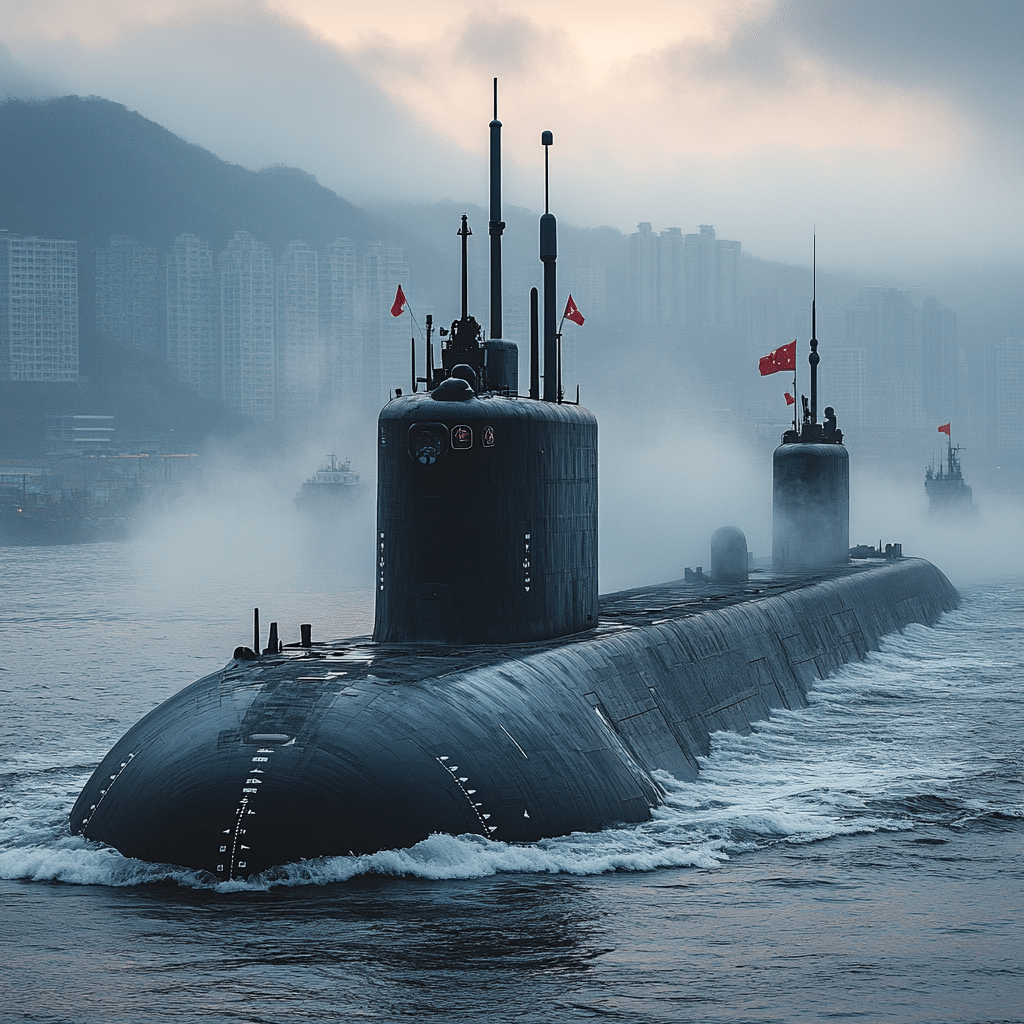
Iran and the Nexus of Nuclear Submarine Technology and Weapons Development
There’s a concerning network forming around nuclear capabilities that extends to the Middle East. China’s advancements in underwater warfare technology could bolster Iran’s aspirations in their nuclear weapons pursuit. Cooperation between these two nations poses severe implications, enabling Iran to potentially develop its nuclear arsenal while fostering military technology transfers.
As their collaboration solidifies, the U.S. must remain vigilant. Any partnership between China and Iran that enhances military technology and capabilities is a ticking time bomb, creating further instability in an already volatile region.
Global Reactions and the Future of Naval Warfare
Western powers have not sat idly by in response to the rise of Chinese nuclear submarines. Military investments are soaring as countries undertake strategic exercises to counter this escalating threat. The United States Navy, with its superior fleet, must recalibrate its strategies, embracing innovative tactics that address the unique challenges posed by China’s growing underwater arsenal.
With the reconfiguration of global naval doctrine underway, nations are acutely aware that the future of warfare may soon unfold beneath the waves, in ways that many cannot yet fully appreciate. The implications for international relations are profound, and all nations engaged in the global maritime arena must adapt to these seismic shifts, especially as China continues to make its naval ambitions clear.
The New Era of Undersea Power Dynamics
As we move forward into 2024, one thing is clear: Chinese nuclear submarines are defining a new era of military strategy. The balance of power is now an undersea affair, influencing alliances and national interests worldwide. It’s imperative that we as a nation confront these challenges head-on.
Nations must reassess their capabilities while preparing proactive strategies that ensure we’re not left vulnerable beneath the waves. China’s ambitions are unmistakable, and it’s time for conservatives and all Americans to stand firm, ensuring that our maritime interests are protected for generations to come.
Chinese Nuclear Submarines: A Dive into Trivia
The Impact of Chinese Nuclear Submarines
Chinese nuclear submarines are not just a fascinating feat of engineering; they play a crucial role in global military strategy. As tensions flare in the South China Sea, these submarines are often a topic of discussion among defense analysts. Fun fact: a submarine can stay submerged for months at a time, making them a stealthy option for maritime power plays. Think about it—much like how we relied on the strength of structures like The Statue Of Liberty during tough times, nations lean on their sub fleets for strength and deterrence.
The Numbers Behind the Power
Did you know that the People’s Liberation Army Navy (PLAN) has ramped up its submarine fleet significantly? Estimates suggest there are around 60 nuclear vessels in total. This makes Chinese nuclear submarines a formidable force, especially as they undergo advancements in technology. Interestingly, their development echoes a historical backdrop that includes global incidents like the 1993 World Trade Center bombing, shaping national defenses in different ways. Just as construction crews in Malibu need to be prepared for challenges like earthquakes, so too does a naval fleet need to adapt and evolve strategically.
Submarines and Global Chess
In today’s world, geopolitics is a real-life chess game, and Chinese nuclear submarines are significant pieces on this board. With every launch, the stakes rise, and so does the tension with competing powers. Just as a player in a chess match plans several moves ahead, nations strategize their military postures. In the midst of these dynamics, one would wonder, could strategies be as complex as the way teams like the Tampa Rays execute plays? The influence of Chinese submarine capabilities extends far beyond military might; it also encapsulates economic interests and alliances.
So, next time you hear about Chinese nuclear submarines in the news, remember they’re not just underwater giants; they’re key players in a high-stakes game reminiscent of everything from real estate decisions related to Types Of home Loans to community projects in non-profit jobs Sacramento needs. The world keeps turning, and so do the tides of power!
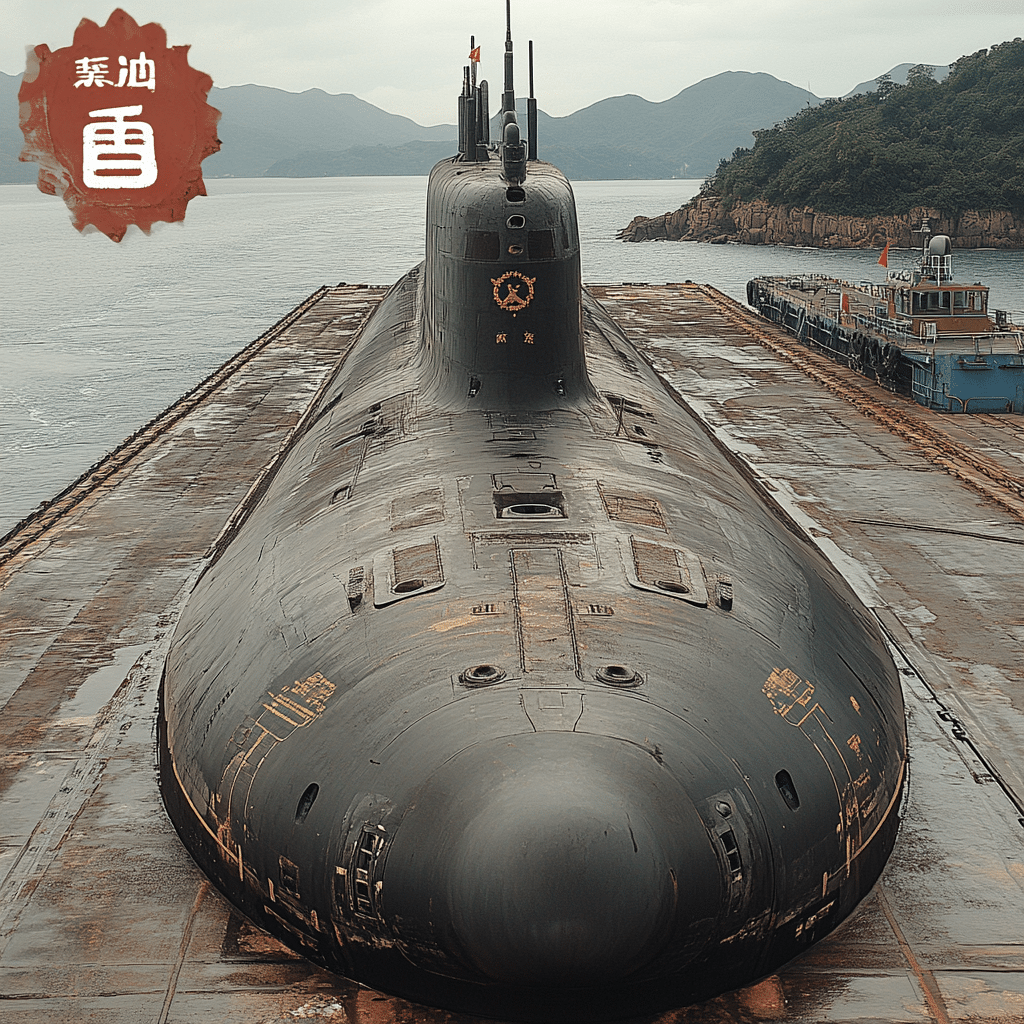
How many nuclear submarines does China have?
China is estimated to have six or seven Jin-Class submarines, along with several Shang-Class submarines, but exact numbers aren’t clear due to the country’s secrecy.
Who has the best submarine in the world?
The U.S. Navy operates what is widely regarded as the best submarine fleet globally, boasting a mix of advanced technology and highly trained personnel.
How many submarines does China have compared to the United States?
Compared to the United States, China’s known nuclear submarine fleet is significantly smaller, with the U.S. having 66 nuclear submarines, far outnumbering China.
What country has the most powerful nuclear submarines?
The U.S. holds the title for having the most powerful nuclear submarines, thanks to advanced technology and capabilities found in its fleet.
What is the noise level on a Chinese submarine?
Details on the noise level of Chinese submarines aren’t well-publicized, but they tend to be considered noisier than their American counterparts.
Who has the biggest nuclear submarine?
The largest nuclear submarine in the world is the Russian Typhoon-class submarine, which is known for its substantial size and capabilities.
What is the most feared submarine in the world?
The most feared submarine in the world is often considered to be the U.S. Navy’s Virginia-class submarines, known for their stealth and advanced technologies.
What is the most secret submarine in the US?
The U.S. Navy’s most secret submarine is often thought to be the Sea Wolf-class submarine, designed specifically for stealth and specialized missions.
Who has the best navy in the world?
The U.S. Navy is widely considered the best in the world, with unmatched technological superiority, size, and global reach.
How many US destroyers are there?
As of 2023, the U.S. has around 70 guided missile destroyers in its fleet, demonstrating significant naval power.
Would the Chinese navy beat the US navy?
While the Chinese navy has grown rapidly, most military analysts believe the U.S. navy would still have the upper hand in a direct conflict.
Is Japan’s navy better than China?
Japan’s navy is generally considered superior to China’s due to its advanced technology, training, and defense partnerships, especially with the U.S. and other allies.
Can the US track Russian subs?
Yes, the U.S. has advanced capabilities that allow it to track Russian submarines through various surveillance and intelligence methods.
How long can a nuclear submarine stay underwater?
A nuclear submarine can stay underwater for several months, as long as it has food and supplies for the crew.
Which country has the largest fleet?
The U.S. has the largest fleet of nuclear submarines, boasting 66 in total, which is more than any other country.
How many nuclear subs does USA have?
Reports suggest that China’s newest nuclear submarine, the Type 095, has not experienced any incidents leading to its sinking.
Did China’s newest nuke submarine sank?
Japan operates four nuclear-powered submarines, which enhances its maritime defense capabilities.
How many nuclear submarines does Japan have?
Australia is set to receive three Virginia-class submarines as part of its AUKUS agreement with the U.S. and the U.K., bolstering its naval capabilities.

